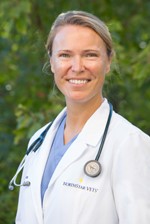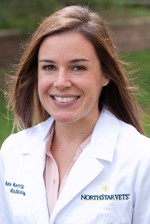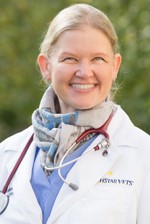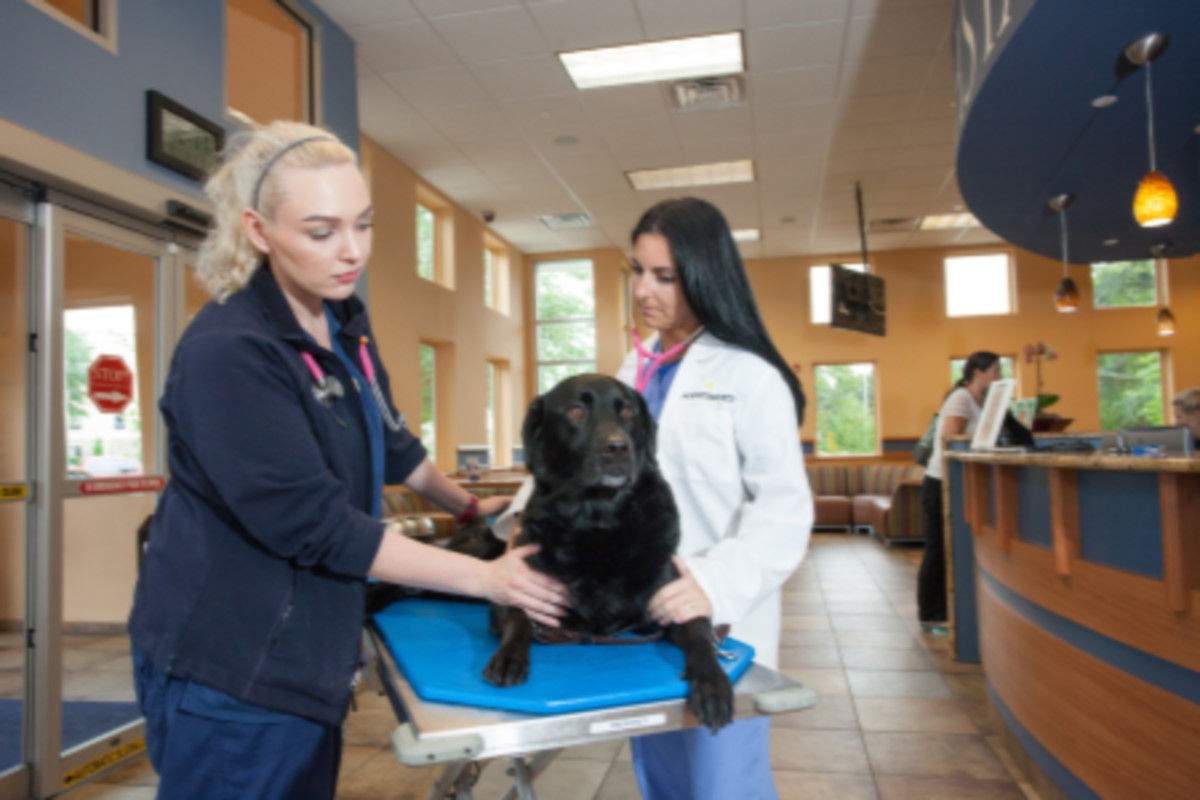-
Recent Posts
Archives
- October 2022
- August 2022
- May 2022
- March 2022
- January 2022
- December 2021
- September 2021
- July 2021
- June 2021
- May 2021
- April 2021
- February 2021
- January 2021
- November 2020
- October 2020
- September 2020
- June 2020
- April 2020
- March 2020
- February 2020
- January 2020
- December 2019
- November 2019
- October 2019
- September 2019
- June 2019
- March 2019
- February 2019
- January 2019
- December 2018
- November 2018
- October 2018
- August 2018
- July 2018
- June 2018
- May 2018
- April 2018
- March 2018
- February 2018
- January 2018
- December 2017
- November 2017
- October 2017
- September 2017
- August 2017
- July 2017
- June 2017
- May 2017
- April 2017
- March 2017
- February 2017
- January 2017
- December 2016
- November 2016
- August 2016
- July 2016
- June 2016
- May 2016
- April 2016
- March 2016
- February 2016
- January 2016
- December 2015
- November 2015
- October 2015
- September 2015
- August 2015
- July 2015
- June 2015
- May 2015
- April 2015
- March 2015
- December 2014
- June 2014
- May 2014
- April 2014
- November 2013
- September 2013
- August 2013
- July 2013
- June 2013
- May 2013
- March 2013
- January 2013
- November 2012
- October 2012
- July 2012
- December 2011
- November 2011
- October 2011
- September 2011
- August 2011
- July 2011
- June 2011
- May 2011
- April 2011
- March 2011
- February 2011
- January 2011
- December 2010
- November 2010
Categories
Case Success: Mud
First NorthStar VETS Therapeutic Radiation Patient Receives Second Treatment Course
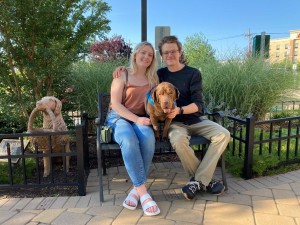 Mud, a six-year-old Sharpei dog, first had symptoms of a heart base tumor over two years ago when his abdomen began to fill with fluid (ascites). Using ultrasound at his family veterinary clinic, the primary care doctor found the cause to be a tumor of the right top chamber of Mud’s heart (right atrium), which backed up fluid traveling back from the abdomen through the main vein called the “vena cava.” He was treated with a 20 daily treatment protocol of intensity-modulated radiation therapy in January 2019. The fluid slowly disappeared as Mud’s heart base tumor reduced in size. Mud lived over two years after his initial therapeutic radiation treatment, and at age six, the fluid began to accumulate again. A recheck CT scan was performed, revealing that his heart base tumor was beginning to grow again. Stereotactic body radiation therapy (SBRT/SRT) was used for Mud’s second treatment course, which allows highly concentrated doses of radiation to be delivered with submillimeter accuracy over three consecutive days. Further, because advanced imaging utilizing the Varian Halcyon’s onboard cone beam CT scanner (CBCT), greater surrounding normal tissue avoidance for this second radiation treatment was achieved. Mud graduated from his SRT treatment on June 10, 2021 as the first patient to be treated at NorthStar VETS with PetCure Oncology, a nation-wide veterinary oncology care provider. We wish Mud a quick return to his normal quality of life and many more happy days at home!
Mud, a six-year-old Sharpei dog, first had symptoms of a heart base tumor over two years ago when his abdomen began to fill with fluid (ascites). Using ultrasound at his family veterinary clinic, the primary care doctor found the cause to be a tumor of the right top chamber of Mud’s heart (right atrium), which backed up fluid traveling back from the abdomen through the main vein called the “vena cava.” He was treated with a 20 daily treatment protocol of intensity-modulated radiation therapy in January 2019. The fluid slowly disappeared as Mud’s heart base tumor reduced in size. Mud lived over two years after his initial therapeutic radiation treatment, and at age six, the fluid began to accumulate again. A recheck CT scan was performed, revealing that his heart base tumor was beginning to grow again. Stereotactic body radiation therapy (SBRT/SRT) was used for Mud’s second treatment course, which allows highly concentrated doses of radiation to be delivered with submillimeter accuracy over three consecutive days. Further, because advanced imaging utilizing the Varian Halcyon’s onboard cone beam CT scanner (CBCT), greater surrounding normal tissue avoidance for this second radiation treatment was achieved. Mud graduated from his SRT treatment on June 10, 2021 as the first patient to be treated at NorthStar VETS with PetCure Oncology, a nation-wide veterinary oncology care provider. We wish Mud a quick return to his normal quality of life and many more happy days at home!
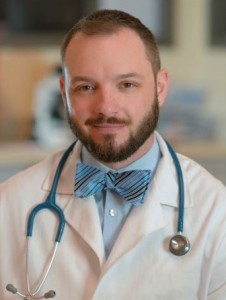 Rick Chetney, DVM, DACVR-RO
Rick Chetney, DVM, DACVR-RO
Rick Chetney is a native of central New York and has been practicing radiation oncology since 2013. He earned his DVM degree from Kansas State University in 2010, and completed a rotating small animal surgery and medicine internship at BluePearl Michigan Veterinary Specialists in 2011. Completion of a 12-month medical oncology specialty internship at the University of Tennessee in Knoxville followed. Dr. Chetney then worked as an emergency clinician at RIVER in Chattanooga before returning to the University of Tennessee and completed his residency in radiation oncology in 2015. He was board-certified in radiation oncology by the American College of Veterinary Radiology in 2016.
As a board-certified veterinary radiation oncologist, Dr. Chetney is one of fewer than 100 specialists practicing within his field in the world. He has a special interest in minimizing radiation side effects, skin healing, intensity-modulated radiation therapy (IMRT), and stereotactic radiation therapy (SRT/SRS/SBRT) for various tumors. He was the first on-site veterinary radiation oncologist to employ the use of linear accelerator-based IMRT in eastern Pennsylvania, and has practiced previously in the use of strontium-90 brachytherapy. After working in the Greater Philadelphia Region for five years, Dr. Chetney joined PetCure Oncology in June of 2020, and now provides his services to the patients and clients of Northstar VETS. He resides in Southeastern, PA with his wife, where they enjoy disc golf, kayaking, hiking, and anything outdoors. They are pet parents to Theo (Siamese/ragdoll mix cat), Logan (Border collie), and Roux (toy poodle).
Posted in Pets, Veterinary Medicine
Tagged Mud, NorthStar VETS, PetCure Oncology, Radiation Oncology, Rick Chetney
Leave a comment
New Satellite Summer Hours
Effective Thursday, July 1st, the NorthStar VETS satellites in Maple Shade and Brick will have new hours. For the duration of the summer, these offices will be open from 7:00am-11:00pm and closed during the overnight hours.
Additionally, both satellites will close completely on Sunday, July 4 and reopen on Monday, July 5 at 7:00am.
The Robbinsville location will remain open 24/7, 365 days a year.
This temporary change is designed to increase the level of service we provide to your patients and clients when they visit during our busiest times of the day. Thank you for your continued trust in us as we strive toward providing the best possible medicine and customer service to our community, clients and patients.
Posted in Pets, Pets, Uncategorized, Veterinary Medicine
Tagged hours and availability, NorthStar VETS, satellites
Leave a comment
Why Emergencies are Longer
WHY IS MY PET’S EMERGENCY VISIT TAKING SO LONG?
Due to the pandemic, all of our NorthStar VETS locations have seen huge patient surges due to family veterinarians with limited hours or other emergency hospitals diverting patients. As in human medicine, our facilities triage patients according to an assigned degree of urgency based on wound, illness, or trauma. The higher degree of urgency, the quicker a patient is admitted. While this can be frustrating, it helps our ER staff assist those requiring immediate treatment faster and even saves lives.
Reasons Why You May Be Experiencing a Long Wait Time:
- Large volume of cases overall increases client wait times.
- Socially distanced appointments take longer to navigate. These challenging precautions keep all of our staff, clients, and pets safe.
- Critical patients take priority and require immediate refocused attention of staff.
- A major influx of phone calls causes longer hold times. We apologize for any inconvenience.
- Diagnostic work-ups and tests (blood work, X-rays, and ultrasounds) take time to process.
- Backlogs in our Pharmacy Department also cause discharge delays.
Behind-the-Scenes Challenges Require More Time To:
- Check-in/check-out patients
- Review test results
- Discuss pet exam findings to the pet parent
- Explain/demonstrate patient discharge instructions
- Traffic and schedule follow-up appointments
- Fill or refill patient prescription(s)
- Process payments
What Hasn’t Changed Is Our Absolute Commitment To You And Your Pet. We Are Doing Our Best To Serve You 24/7, But We Need Your Help!
- One masked family member per pet may enter our facility.
- Please adhere to our corporate policies and COVID social distancing protocols for trouble-free service.
- Please bring patience, kindness and good energy to your conversations with our: Customer Service Representatives, technicians, and emergency doctors.
- Allow ample wait times for physical exams, patient work-ups, prescriptions, discharge instructions and follow-up paperwork.
Read the flyer: Why are ER Visits Taking so Long?
Posted in Pets, Uncategorized, Veterinary Medicine
Tagged Coronavirus, COVID-19, Curbside, NorthStar VETS
Leave a comment
From the Client Perspective: I Feared Losing My Best Friend
I have a natural love for dogs, all animals, and life in general, but I especially know the heartbreak of losing a beloved dog. They are simply not with us long enough, and the last dog I lost was my Black Lab, Onyx. At the age of ten, Onyx suddenly became sick one Wednesday night and by Saturday morning he was gone. I feel like I never quite got closure and still carry his loss with me.
Onyx sired one litter in his lifetime resulting in nine beautiful puppies. One of those dogs was Chockie, who I gave to my son. At the time, my son moved around a lot and Chockie visited me on different weekends. One particular weekend, while my son was stopping by to drop Chockie off, he said, “Dad, I know how much Onyx meant to you, and what you went through with him. Why don’t you keep Chockie?” Chockie was five months old at the time and we’ve been inseparable ever since.
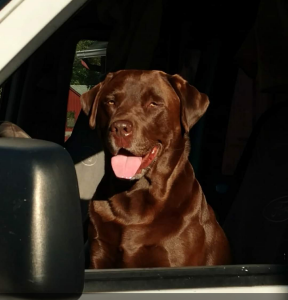 I was living alone with my two cats, but Chockie became my boy. We came to love each other deeply and do everything together. He sleeps in my bed when I’m not home. He rides in the car with me. We even live off our own organic diets. He is wonderful and we understand each other completely.
I was living alone with my two cats, but Chockie became my boy. We came to love each other deeply and do everything together. He sleeps in my bed when I’m not home. He rides in the car with me. We even live off our own organic diets. He is wonderful and we understand each other completely.
He turned ten recently, and is getting older. On our rides, I help him in and out of the car. He sees his family veterinarian twice a year, and on a recent visit, we received some bad news. Normal liver enzyme levels for a dog should be between five and one-hundred-thirty. Chockie’s enzyme levels were at three-thousand! We were referred to Dr. Karah Burns of the NorthStar VETS Internal Medicine team for further treatment. I was shocked, devastated, and frankly scared.
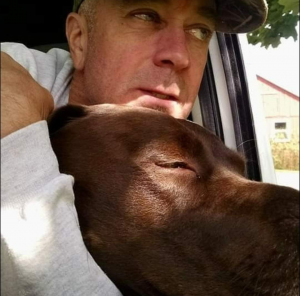 We got the first available appointment because there was no question I would do everything possible to save his life. It was hard sending him into the hospital without me, but I trusted the team at NorthStar VETS. Dr. Burns used an ultrasound machine to find a tumor on his liver. Suspecting a type of cancer called hepatocellular carcinoma, she recommended I see a veterinary surgeon to have it removed, and I wanted to see a surgeon that afternoon! I was able to speak with the surgery team who said the first step was getting a CT scan. I was told that hepatocellular carcinomas originate from liver cells (hepatocytes) and have a low rate of spread to other organs. The doctor recommended staging, which would use blood work and the CT scan of the chest and abdomen to look for other life-threatening problems in the body that could be associated with the mass. Finally, I was told that surgically removing the tumor is the best option and statistically has favorable results. This is because untreated liver tumors result in a much higher rate of death resulting from the tumor than dogs who get them removed. These tumors can rupture and bleed into the abdomen or compress the main bile duct that drains bile from the liver into the intestines, causing jaundice. It could also compress other internal organs or blood vessels. I knew what needed to be done, and we left the hospital confident in our plan. That night, he seemed painful, so I called the surgeon, who let my family veterinarian know they could prescribe some pain medication. A few days later, we were back for the CT and surgery.
We got the first available appointment because there was no question I would do everything possible to save his life. It was hard sending him into the hospital without me, but I trusted the team at NorthStar VETS. Dr. Burns used an ultrasound machine to find a tumor on his liver. Suspecting a type of cancer called hepatocellular carcinoma, she recommended I see a veterinary surgeon to have it removed, and I wanted to see a surgeon that afternoon! I was able to speak with the surgery team who said the first step was getting a CT scan. I was told that hepatocellular carcinomas originate from liver cells (hepatocytes) and have a low rate of spread to other organs. The doctor recommended staging, which would use blood work and the CT scan of the chest and abdomen to look for other life-threatening problems in the body that could be associated with the mass. Finally, I was told that surgically removing the tumor is the best option and statistically has favorable results. This is because untreated liver tumors result in a much higher rate of death resulting from the tumor than dogs who get them removed. These tumors can rupture and bleed into the abdomen or compress the main bile duct that drains bile from the liver into the intestines, causing jaundice. It could also compress other internal organs or blood vessels. I knew what needed to be done, and we left the hospital confident in our plan. That night, he seemed painful, so I called the surgeon, who let my family veterinarian know they could prescribe some pain medication. A few days later, we were back for the CT and surgery.
Dr. Jackie Williams, the Radiologist, confirmed a softball-sized tumor on Chockie’s liver and he was off to the operating room. Dr. Gregory Zuendt of the surgery team successfully removed a liver lobe and the tumor. Two days later, Chockie came back home with me.
 At a follow-up appointment with my family veterinarian after the surgery, Chockie’s liver enzyme level decreased to 200! Last week’s follow up had the number just two points above normal. Now, we don’t have to go back to follow up for another six months. The team at NorthStar VETS obtained clean margins and my boy is cancer-free at this point!
At a follow-up appointment with my family veterinarian after the surgery, Chockie’s liver enzyme level decreased to 200! Last week’s follow up had the number just two points above normal. Now, we don’t have to go back to follow up for another six months. The team at NorthStar VETS obtained clean margins and my boy is cancer-free at this point!
Life is pretty much back to normal now. I’m considering a career change that will allow me to help more pets. Chockie and I are still inseparable and I can’t thank the doctors and nurses at NorthStar VETS enough for saving my dog’s life.
Learn more about the Internal Medicine service at NorthStar VETS
Karah Burns DeMarle, DVM (Practice Limited to Internal Medicine)
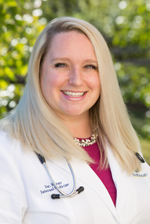
Dr. Karah Burns DeMarle was born and raised in Rochester, New York. She completed her undergraduate studies in New York, receiving both an associate’s degree in veterinary science technology from SUNY Canton and a bachelor’s degree in animal science from Cornell University. From there, she moved to Ohio to complete her veterinary degree at The Ohio State University. Upon graduation in 2016, she moved to Massachusetts to complete a one-year rotating internship followed by a 3-year small animal internal medicine residency at the Cummings School of Veterinary Medicine at Tufts University. Although she enjoys all aspects of internal medicine, she has a special interest in diseases that affect the liver and gallbladder of cats and dogs.
She currently lives with her husband, Patrick, and their two dogs (Dolly and Frenchie), three cats (Ziggy, Mya and Pickles) and betta fish (Sashimi). In her free time, she enjoys visiting the beach, traveling abroad, sewing, watching baseball (go Sox!) and college football (go Buckeyes!).
Jackie M. Williams, DVM, MS, DACVR
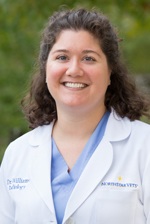
A native of Virginia,Dr. Williams initially began a career as an engineer after completing undergraduate and graduate degrees at the University of Virginia. She earned her veterinary degree from the Virginia-Maryland Regional College of Veterinary Medicine at Virginia Tech. Dr. Williams then completed a small animal rotating internship at Affiliated Veterinary Specialists in Florida and a diagnostic imaging residency at Iowa State University. Following an academic career as a clinical assistant professor of diagnostic imaging at The Ohio State University and University of Wisconsin-Madison, Dr. Williams joined NorthStar VETS in 2016. Her clinical interests include ultrasonography of the feline biliary tract and pancreas, CT of avian coelomic diseases, and dental radiography.
Gregory Zuendt, DVM
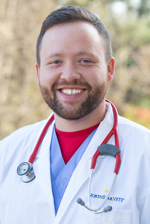
Dr. Zuendt graduated veterinary school from the University of Illinois in 2015. He went on to complete a small animal rotating medicine and surgery internship at Oradell Animal Hospital. Following this, he completed a surgery-specific internship in Nashville at BluePearl Veterinary Partners. Dr. Zuendt then joined NorthStar Vets in July 2017 and has a special interest in surgery, critical care medicine, neurology, and cardiology.
Posted in Pets, Pets, Uncategorized, Veterinary Medicine
Tagged Chockie, Gregory Zuendt, Jackie Williams, Karah Burns, NorthStar VETS
1 Comment
Feline Blood Donors Save Two Lives
Cats need blood transfusions for many reasons, but anemia is a common scenario. One measurement of a cat’s blood is its packed cell volume (PCV), which estimates the percent of blood that is red blood cells. In a healthy cat, that number is somewhere between 30% and 45% with some variability. When a cat’s PCV falls below 25% (anemia), a veterinary internist or emergency doctor will transfuse blood from a donor cat into the sick cat to save its life. Recently, this procedure was needed in two separate cases at NorthStar VETS, and two healthy cats donated blood that same day.
Patch was brought to his family veterinarian for lethargy and low appetite. His blood work showed anemia, a mild elevation in white blood cells (indicating infection), and weight loss. He was referred to Dr. Tammy Anderson of the NorthStar VETS Internal Medicine team who admitted him for further testing. Patch’s PCV dropped to 12%, requiring a blood transfusion which saved his life by bringing his PCV back up to 20%, good enough for him to finish recovering at home before his next recheck.
Jasper was brought to his family veterinarian for lethargy and low appetite as well, where it was found he was anemic. He was referred to NorthStar VETS where it was discovered he had a PCV of 12%. Because he was in anemic shock, Dr. Marko Drazenovic of the NorthStar VETS Emergency and Critical Care team gave him a blood transfusion and handed the case to Dr. Anderson. After a couple days in the hospital, his PCV was up to 20%, but dropped back down to 14%. Jasper received a second transfusion which brought his PCV back up to 17% the next day. Looking much brighter, he went home with a PCV of 20% when discharged and will get further care.
From where did that life-saving blood come? NorthStar VETS Veterinary Assistant, June O’Hara, brought in her cats, Squeaker and Gandalf the Grey, to make the donations. Squeaker’s blood was taken in one room of the hospital and carried to the room where Patch needed it right away. Gandalf’s blood went to the bank, but was almost immediately taken back out to save Jasper. The need for blood from dogs, cats, and exotic pets is great and new donors are always welcome into the program!
To see if your pet could donate to the NorthStar VETS Blood Bank, visit https://www.northstarvets.com/blood-bank.
Tammy Anderson, DVM, DACVIM
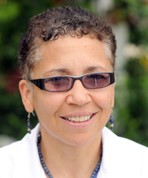
Dr. Anderson is a New Jersey native who received her veterinary medical degree from Ohio State University in 1995. She completed her small animal internship at Michigan State University in 1996, and her residency in small animal internal medicine at the University of Tennessee in 1999. She remained at UT as an assistant professor of small animal medicine until 2001, when she returned to New Jersey and entered private practice. Dr. Anderson joined NorthStar VETS in 2004.
Marko Drazenovic, VMD
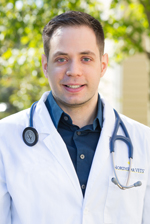
Dr. Drazenovic grew up in New Jersey, and received his undergraduate degree in Animal Science from Rutgers. After completing his veterinary education at the University of Pennsylvania, he went to Ocean State Veterinary Specialists, another veterinary trauma center in Rhode Island, for further training during his rotating internship. Dr. Drazenovic joined the NorthStar VETS team to continue practicing his passion for high-quality emergency care. His clinical interests include emergency stabilization and exotic species. In his spare time, Dr. Drazenovic enjoys caring for his cat, gecko, and aquariums.
Posted in Pets, Veterinary Medicine
Tagged blood bank, feline anemia, Marko Drazenovic, NorthStar VETS, Tammy Anderson
Leave a comment
Meet the NorthStar VETS Team: Zoe Launcelott, DVM, DACVS
Zoe Launcelott, DVM, DACVS is a doctor in the Surgery service at NorthStar VETS. In this video, she talks about why she left a future in human medicine to pursue veterinary surgery, the case that meant the most to her, and the number one thing she wants you to know.
How Dr. Launcelott got into Veterinary Medicine
We caught up with Dr. Launcelott, who was checking on her patients before heading to the operating room. She told us more about herself and what she does. “I am one of the surgeons here, and what we do here in the surgery department is orthopedic surgery, soft tissue surgery, and emergency surgery.”
“I grew up in Halifax, Nova Scotia, so I ended up going to school at the Atlantic Veterinary College at the University of Prince Edward Island. After veterinary school, I did a rotating internship in Toronto, Ontario, and then I came down to the United States doing a specialty surgery internship in Connecticut followed by a three-year residency.”
“My father was an anesthesiologist so I basically grew up working in the human hospital my whole life and figured that I would end up being a human physician. In my third year of university, my cat, Snowy, ended up being diagnosed with a vaccine-related fibrosarcoma, which is a cancer. I went to the veterinary office very frequently for her care and realized that the compassion side of things in veterinary medicine was more ‘me’ than what I was seeing on the human side. I elected to then apply to veterinary school thinking that I was going to be an oncologist and cure cancer, however, during my schooling, I realized that surgery was really my passion and therefore I would be able to remove the tumors on these pets and give them a chance at a happy, healthy life.
What Dr. Launcelott Loves About Her Work
“What I like about NorthStar VETS is the camaraderie, being able to walk into various departments and collaborate on a case in order to give the best possible care to the patient. What I love about being a veterinarian is being able to help the animals that are so reliant on us.”
The Case that had the greatest impact on Dr. Launcelott
“A lot of times here in surgery we’re focused on orthopedics or a small procedure, and we see the client two or three times. You don’t get to build any sort of long-term rapport with them. But this one wound case had a terrible complication and came to me where we ended up having to do wound therapy. The wound, unfortunately due to its nature and location, was unable to close primarily, meaning we couldn’t close it first pass. We ended up having to use a wound vac, which is a device that just helps to increase the ability of a wound to heal and heal quicker. We then had to do multiple bandage changes until this wound healed by second intention.”
“No matter the issue, whether it’s big or small, we are always here to help you and your pet and make recommendations for their care.”
https://www.youtube.com/watch?v=gAxIF0OM-pE
Learn more about the Surgery service at NorthStar VETS.
Zoe Launcelott, DVM, DACVS
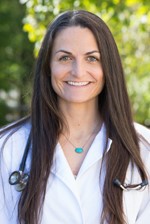
Dr. Launcelott is originally from Nova Scotia, Canada. She obtained her Bachelor of Science degree from St. Mary’s University in Halifax, Nova Scotia in 2009. Following her Bachelor’s degree, she moved to Prince Edward Island where she earned her Doctor of Veterinary Medicine degree in 2013 from Atlantic Veterinary College. She completed a rotating internship at the Veterinary Emergency Clinic and Referral Centre in Toronto, Ontario in 2014, followed by a one-year internship in surgery at VCA Veterinary Referral and Emergency Center in Norwalk, CT. Dr. Launcelott then completed a three-year residency in surgery at Red Bank Veterinary Hospital in Tinton Falls, NJ in 2018. After her residency she joined the surgery department at Oakland Veterinary Referral Services in Bloomfield Hills, Michigan.
She is excited to be a part of the surgery team at NorthStar VETS and make New Jersey her home. Her special surgical interests include, but are not limited to, orthopedic surgery, wound management, surgical oncology, and minimally invasive surgery. Dr. Launcelott is trained in the tibial plateau leveling osteotomy (TPLO) and lateral extracapsular suture techniques for cranial cruciate ligament disease.
Update to Our Covid-19 Hospital Protocols
On Monday, May 3, 2021, we are taking steps toward reopening our hospitals to the public. The safety of our clients and staff is our highest priority, and we will continue to follow safety protocols outlined by the state.
As you pull into our facilities, please follow the instructions below. One pet parent will be escorted by a staff member to a private exam room.
- Robbinsville: In an emergency, bring your pet into our building. Scheduled appointments should park, and one person may come to check in.
- Maple Shade: Bring your pet into our building (one client per pet).
- Brick: Bring your pet into our building (one client per pet).
Plexiglass shields have been installed in our lobby along with touchless payment options. We ask that everyone maintain social distancing practices and utilize the hand sanitizing dispensers located throughout the facilities.
Lastly, for pet parents wishing to safely remain in their vehicle, our staff will come out to receive your pet and communicate via phone to limit face-to-face contact.
We thank you for your patience and understanding, and hope that you are staying healthy and safe during this time.
The NorthStar VETS Team
Posted in Pets, Veterinary Medicine
Tagged Coronavirus, COVID-19, Curbside, NorthStar VETS
Leave a comment
NorthStar VETS Earns VECCS Recertification
(Robbinsville, April 28, 2021) – NorthStar VETS veterinary emergency and specialty veterinary hospital in New Jersey earned Level 1 recertification by the Veterinary Emergency and Critical Care Society. Fewer than forty hospitals in the United States operate at this highest level.
Cindy Hauser MBA, MVT, VTS (ECC), member of the VECCS Facility Certification Committee said, “The Committee was pleased to recertify NorthStar VETS as a VECCS Level I Certified Facility. Congratulations to you, your facility, and to your fine staff of doctors, technicians, reception staff, and kennel workers, on this outstanding achievement!”
Dr. Steven Berkowitz, board-certified Critical Care specialist for NorthStar VETS, summed up what this means for pet parents, “This recertification is an important distinction because it means that pet parents in New Jersey have access to a 24/7 veterinary emergency hospital meeting the industry’s highest standards of care.”
About NorthStar VETS
Located in Robbinsville, NJ, NorthStar VETS is the region’s leader in providing advanced veterinary services by board-certified, residency trained, or highly experienced veterinarians 24/7. As an American Animal Hospital-Accredited (AAHA) Referral Practice, NorthStar VETS continues to set the standard in medical excellence for dogs, cats, birds, exotics, and other family pets. www.northstarvets.com
About VECCS Level 1 Trauma Certification
A Level I emergency and critical care facility is a 24-hour acute care facility with the resources and specialty training necessary to provide sophisticated emergent and critical patient care. This facility is open to receive small animal emergency patients 24 hours a day, 7 days a week, 365 days a year. The level I facility must have a Diplomate of the American College of Veterinary Emergency and Critical Care employed full time and available for consultation either on-site or by phone 24/7. https://veccs.org





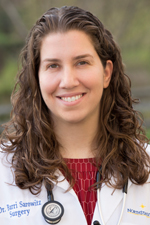 Barri Sarowitz, VMD, DACVS
Barri Sarowitz, VMD, DACVS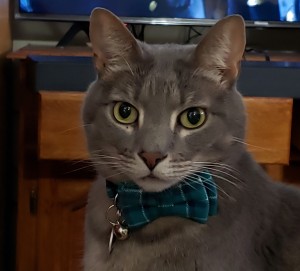
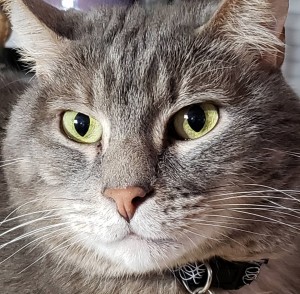
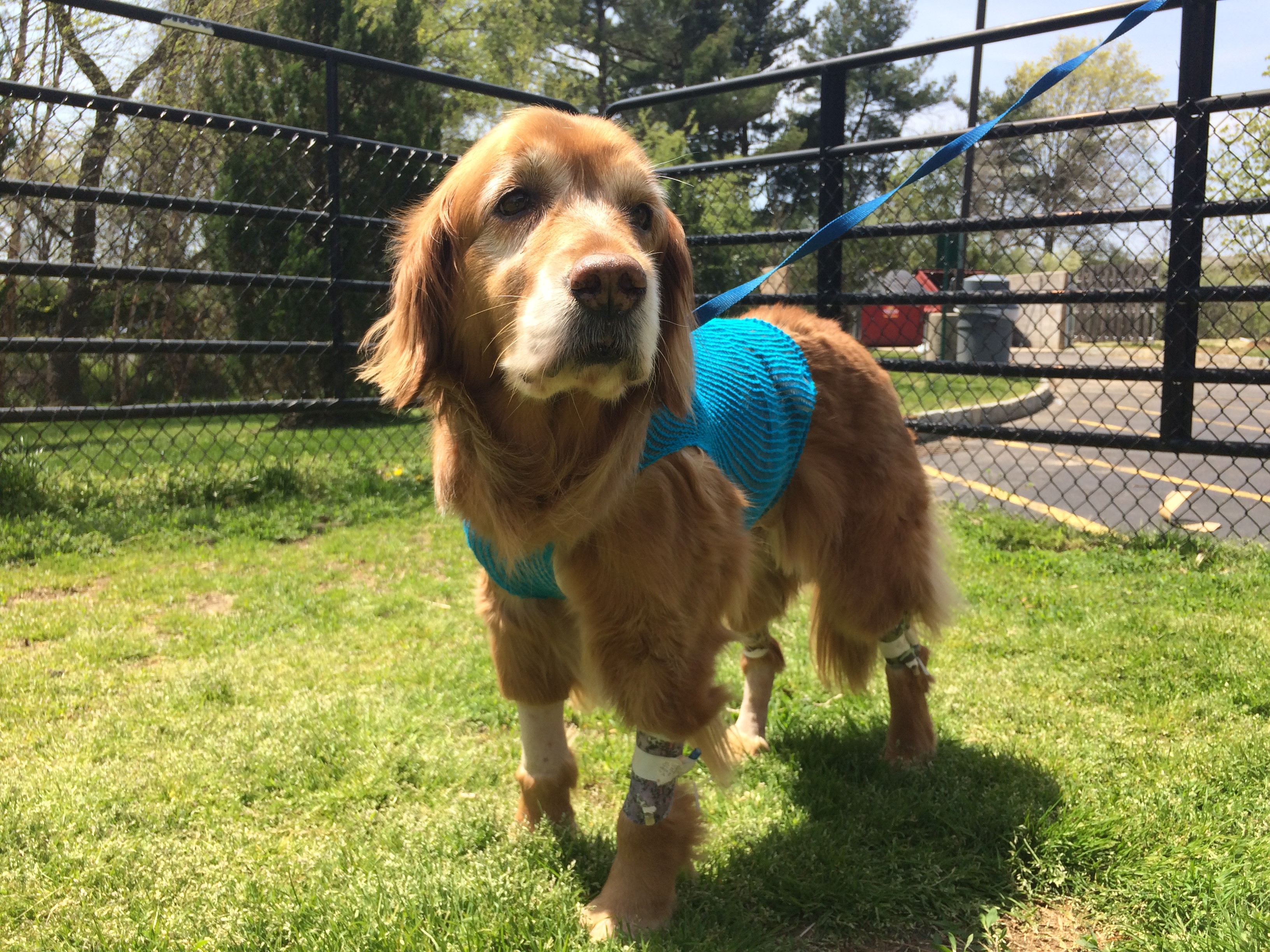
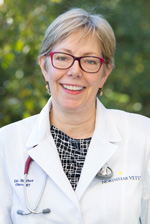
 Dr. Lauren Higgins is a New Jersey native who completed her undergraduate degree in Animal Bioscience at Penn State University. From there, she moved to Southern California to pursue a Doctorate of Veterinary Medicine at Western University of Health Sciences and graduated with honors in 2011. She then returned to New Jersey and completed a small animal rotating internship in medicine and surgery at Garden State Veterinary Specialists in Tinton Falls, NJ.
Dr. Lauren Higgins is a New Jersey native who completed her undergraduate degree in Animal Bioscience at Penn State University. From there, she moved to Southern California to pursue a Doctorate of Veterinary Medicine at Western University of Health Sciences and graduated with honors in 2011. She then returned to New Jersey and completed a small animal rotating internship in medicine and surgery at Garden State Veterinary Specialists in Tinton Falls, NJ. 